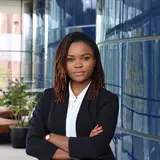How the MAM Program Prepared Me to Lead in a Humanitarian Crisis
Victor Padilla Taylor MAM ’15 reflects on how his classes at Yale SOM have informed his role as a project lead working on humanitarian initiatives at the World Economic Forum.
To be effective in dealing with a major, multifaceted problem such as a humanitarian disaster, you need an advanced set of skills and a trained mindset to think systemically and creatively. In my role at the World Economic Forum supporting the Logistics Emergency Teams (LET), I have found that my time as a student in the Master of Advanced Management program at the Yale School of Management provided me with the knowledge and skills that I need for such a complex undertaking.
According to the United Nations, last year there were 128.6 million people affected by conflict, violence, and disaster in the world. Among those numbers, 96.9 million required humanitarian assistance–three times more than 10 years ago. This means that global humanitarian financing has surged to unprecedented levels, or $22 billion a year, raising the need for more efficiency and accountability in how this assistance is provided.
One of my courses during my time at SOM was Supply Chain Management. Professor Sang Kim taught us how to better manage the flows of materials and information among all stakeholders involved in fulfilling the needs of end users like beneficiaries of humanitarian assistance. When you consider that between 60 and 80% of emergency response spending is related to logistics you can easily understand how important it is to master strategic- and operational-level supply chain problems and quantitative tools.
Another course that provided me with key insights for my current work was Managing Social Enterprises. Impact measurement is a central concern among stakeholders in the humanitarian community. I learned from Professor Kate Cooney how to establish assessment frameworks with indicators that validate our social efforts both for the short and long term (this is called “theory of change”). I also learned about how to prioritize competing stakeholder claims, going beyond just identifying each of them and understanding the dynamics inherent to each relationship (this is called “stakeholder theory”). While deploying assistance to populations in need, you often find yourself mapping key players in your work at the global, country, and individual levels. When disaster strikes, you can face millions of affected people–hundreds of thousands of whom are displaced–and hundreds of organizations coming from all around the world to assist in response. Understanding the disparate needs of all involved—and how to manage them—is crucial.
Take one example: Super Typhoon Haiyan (also called Yolanda), the strongest recorded storm, hit the Philippines in 2013. It caused $2.86 billion in damages to the region and left 1.9 million people homeless and more than 6 million displaced. In disasters like this, how can the humanitarian community respond effectively? How do you restore the broken supply chains and swiftly close the gaps while coordinating with so many different parties at the global and local level?
As l learned during my class Global Challenges with Professor David Bach, crises of this magnitude require the close collaboration of business and society and personal, sustained efforts to overcome unique cultural challenges and to combine the efforts of multi-stakeholder ecosystems crippled with vulnerability. I am glad to have been thoroughly informed of all these approaches during my time at Yale SOM.
I learned about profit, planet, and people during my training in school. Now I feel fully capable of catalyzing tangible action on the ground and serving as a bridge between public and private sector players during collaborative initiatives that surpass the laws of competition when disaster strikes. This has become my passion, and I realize how meaningful my choice of business school was in preparing me to help save lives around the world. I wish everyone else reading these notes the same fortune.



